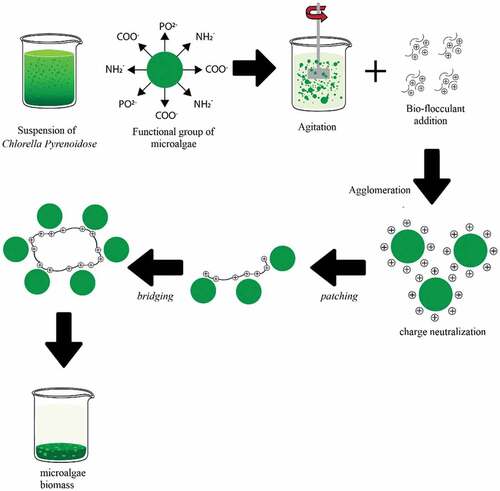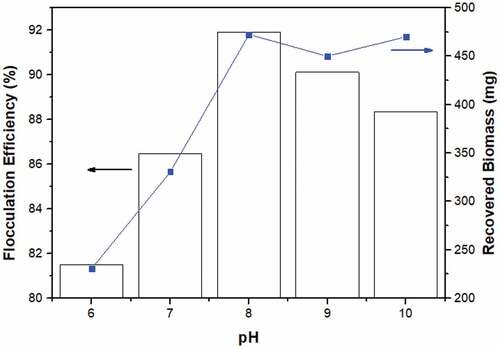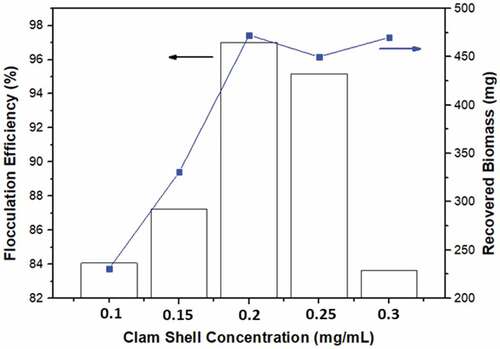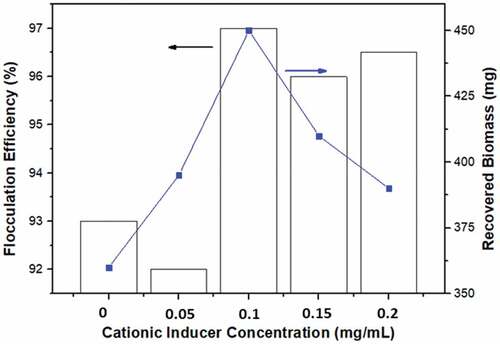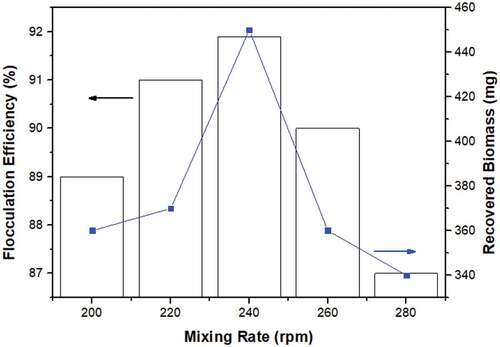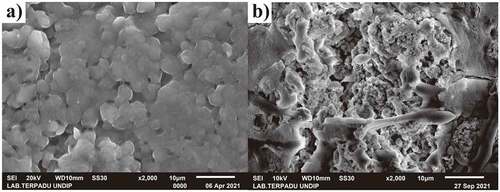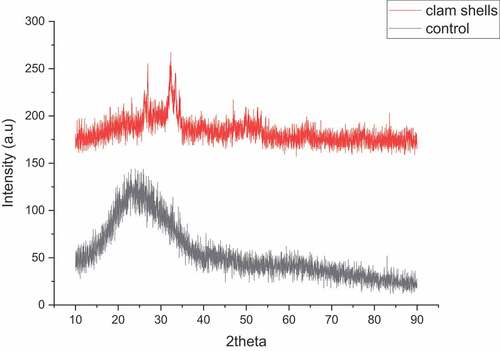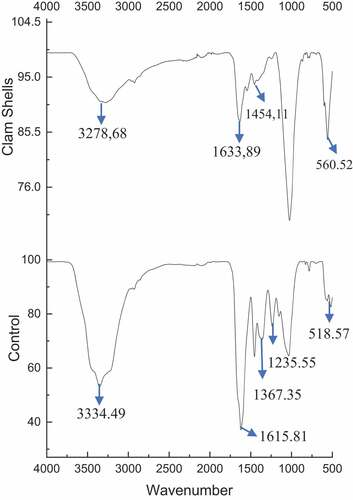Figures & data
Table 1. Coded value based on the factor at a time experiment for 4 variables employed in the study.
Table 2. Central composite design with observed responses pertaining to flocculation efficiency and recoverable biomass.
Table 3. ANOVA table for response surface function on flocculation efficiency.
Table 4. ANOVA table for response surface function on biomass.
Figure 6. 3D response surface and contour plots illustrating the interaction effects of a) Perna viridis-pH, b) cationic inducer-pH, c) mixing rate-pH, d) cationic inducer-Perna viridis, e) mixing rate- Perna viridis, and f) mixing rate-cationic inducer on the flocculation efficiency of Chlorella sp. Flocculation.
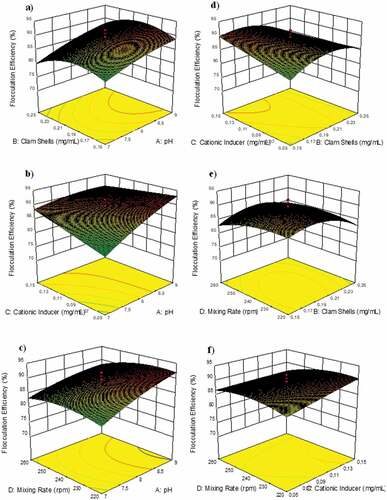
Figure 7. 3D response surface and contour plots illustrating the interaction effects of a) Perna viridis-pH, b) cationic inducer-pH, c) mixing rate-pH, d) cationic inducer-Perna viridis, e) mixing rate- Perna viridis, and f) mixing rate-cationic inducer on the biomass of Chlorella sp. flocculation.
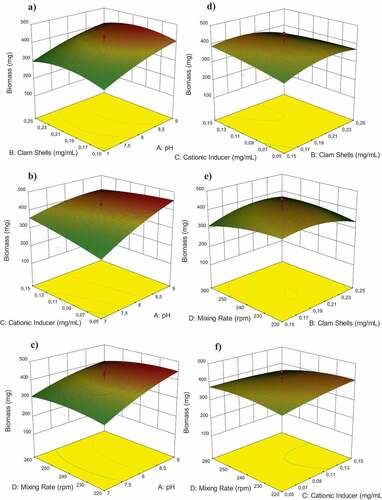
Table 5. Energy Dispersive X-ray spectroscopy (EDX) analysis results for the chemical constituents of Chlorella sp flocculation.

